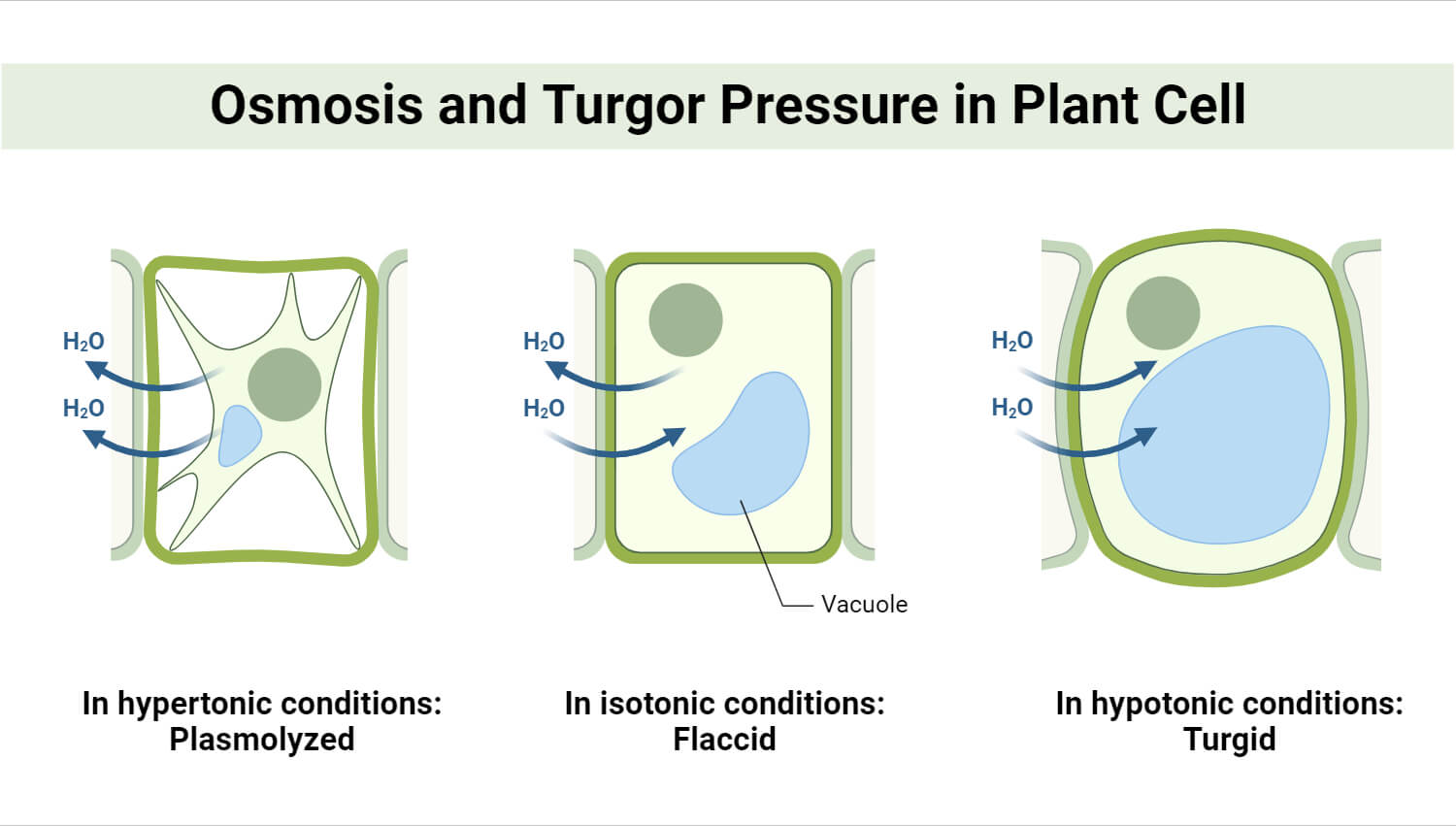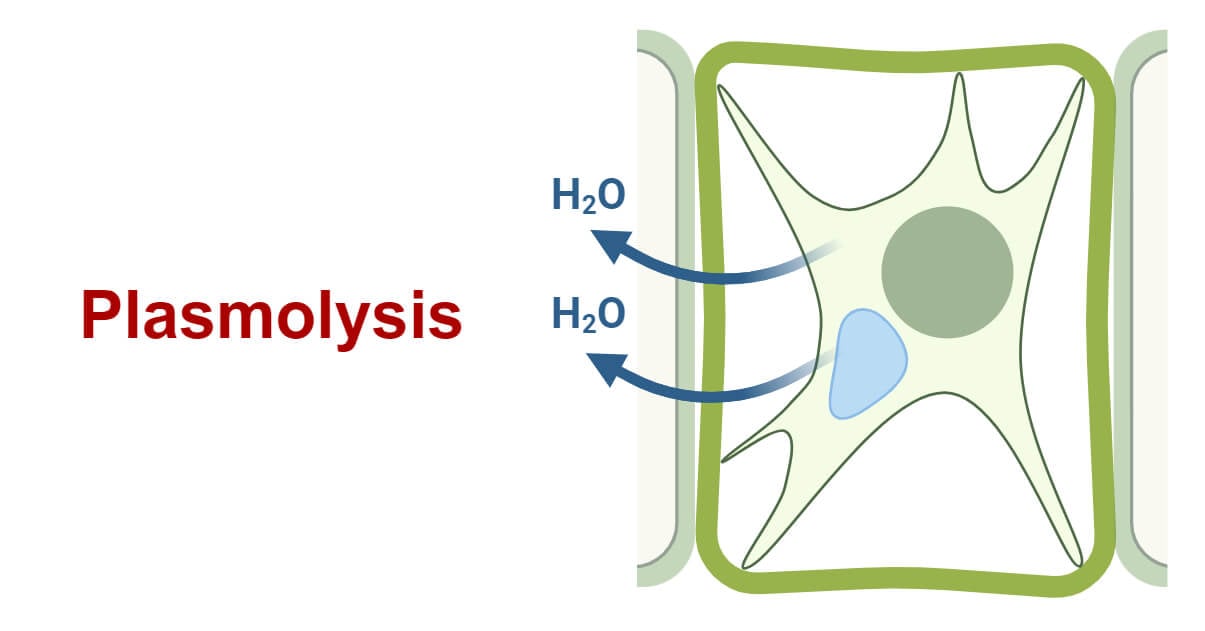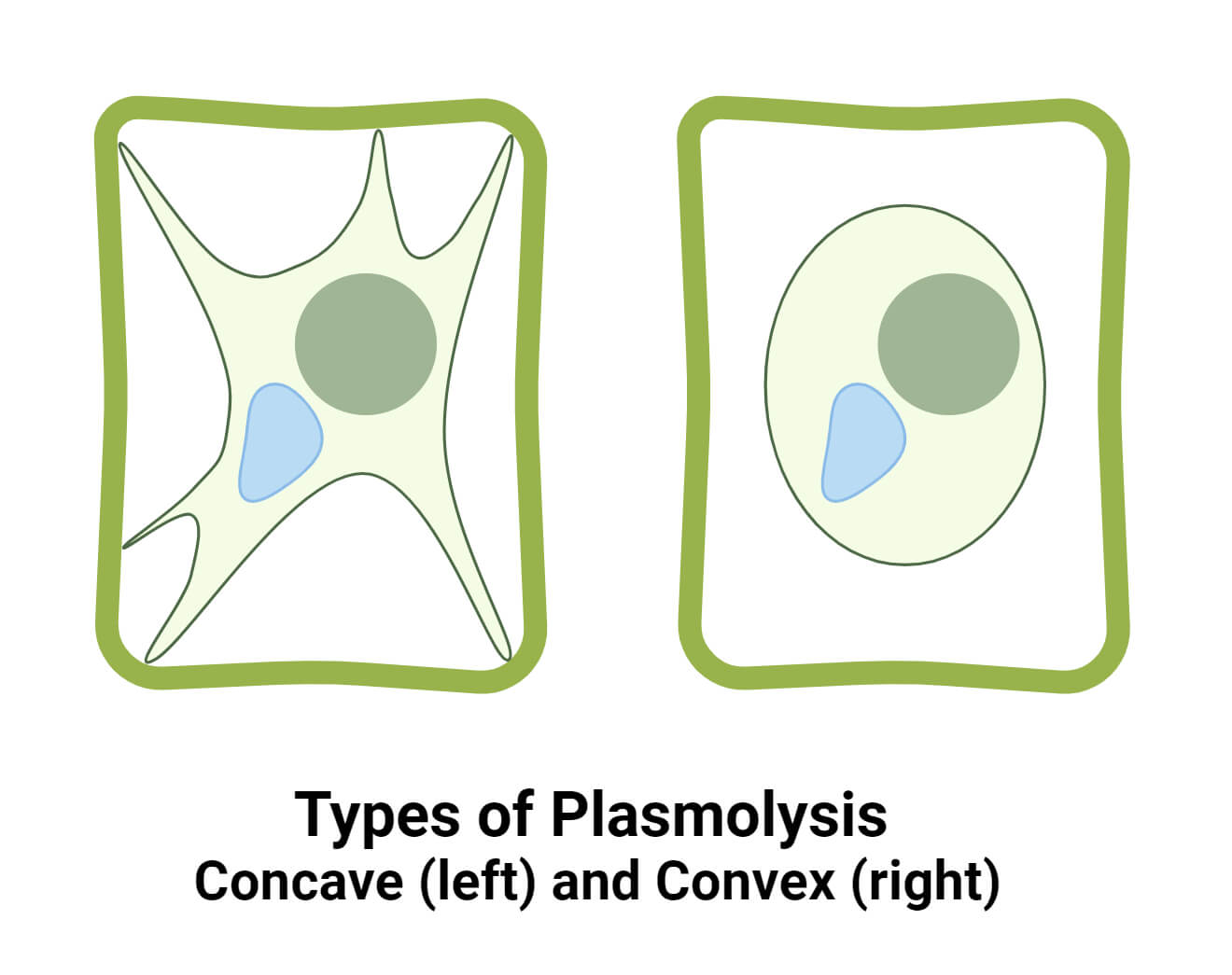Plasmolysis was first defined by de Vries, who developed a method to measure the turgor pressure of plants using hypertonic solutions.
In nature, molecules and ions are continually in motion. They have a natural tendency to distribute uniformly within the available space. They move from regions of higher concentration to lower concentration through the process of diffusion to achieve a state of equilibrium. One of the types of diffusion is osmosis, which involves the movement of water molecules from a region of higher water potential to a lower water potential.

When a cell is placed in a hypertonic solution, water flows out of the cell, causing the cytoplasm to contract and detach from the cell wall. This phenomenon results in the visible shrinkage of the protoplasm and is known as plasmolysis. During plasmolysis, the plant cell shrinks as a result of the water deficit.
Interesting Science Videos
What is Plasmolysis
Plasmolysis is a biological process in which the cytoplasm of a plant cell shrinks away from the cell wall due to the loss of water when the water potential inside the cell is greater than that of the outside. This occurs due to the movement of water as a result of osmosis.

- Plasmolysis occurs when plant cells are exposed to hyperosmotic solutions, such as those containing substances like sucrose, mannitol, or sorbitol. In hyperosmotic conditions, water moves out of the cell due to the higher concentration of solutes outside compared to inside.
- Plant cells contain several specialized cellular organelles which differ from animal cells. The plasma membrane, cytoplasm, and various cell organelles work together to sustain the overall vitality of the plant.
- Within the cytoplasm, fluid-filled vacuoles play a vital role in storing water in the plant cells. The vacuole helps in maintaining the turgor pressure (internal pressure) within the cell.
- In hyperosmotic conditions, water is released from the vacuole, leading to a loss of turgor pressure. When water is lost, the protoplast contracts, separating the plasma membrane from the cell wall.
- Plasmolysis is a reversible process. The addition of hypotonic solutions can expand the protoplast again and restore the initial turgor pressure.
- Plasmolysis specifically takes place in cells fully submerged in a solution, lacking any air spaces around them.
Types of Plasmolysis
Two main types of plasmolysis based on the final structure of the cytoplasm are concave and convex plasmolysis.
Concave Plasmolysis
In concave plasmolysis, the plasma membrane separates from the cell wall and forms small concave pockets. The protoplasm shrinks inwardly in concave plasmolysis. This process is reversible by placing the cell in a hypotonic solution by the deplasmolysis process. Concave plasmolysis suggests higher protoplasmic viscosity or stronger binding between the plasma membrane and wall.

Convex Plasmolysis
In convex plasmolysis, the protoplast separates from the smaller walls of each cell, forming rounded and symmetrical convex ends. Unlike concave plasmolysis, this process is irreversible. The convex form indicates relatively lower viscosity or weaker binding between the plasma membrane and the cell wall.
Plasmolysis Forms
The process of plasmolysis is not uniform across all cells. Different forms of plasmolysis occur and these variations depend on the type of cell being studied and the nature of the plasmolytic solution used. Some other forms of plasmolysis include:
- Incipient plasmolysis refers to the initial stage where the plasma membrane just begins to separate from the cell wall. It can vary among different cells in a tissue. This phenomenon is widely used to measure the osmotic pressure of cells.
- Cap plasmolysis was first reported by Kuster (1929) as an event induced by prolonged exposure to alkaline salts, particularly potassium (K+). It causes swelling in the cell and forms a characteristic cap at the ends of cylindrical protoplasts.
- Systrophe is a phenomenon during plasmolysis where cytoplasm accumulates as a ball, often around the nucleus or other parts of the cell. Systrophe is an entirely reversible process and does not seem to cause cellular damage.
- False plasmolysis, also known as ‘stimulative’ or ‘induced’ plasmolysis, occurs when cells are suspended in hypotonic solutions. It is characterized by plasmolysis-like changes, even though the cells are in a hypotonic environment False plasmolysis may result from an increased permeability of membranes to water.
Examples of Plasmolysis
Plasmolysis rarely occurs in nature and is most often used in laboratory experiments, for example, by submerging plant cells in high-salt or high-sugar solutions.
Plasmolysis is observed in various cases of extreme water loss. Some of these examples are:
- Shrinkage of vegetables in hypertonic conditions
- Contraction of blood cells in hypertonic conditions
- Salt deposition onto land during coastal flooding
- Preservation of food with high salt concentrations hindering microorganism growth.

Significance of Plasmolysis
- Plasmolysis is used in lab experiments for understanding the process of osmosis helping to learn about the movement of water in and out of cells.
- Plasmolysis can be used as a method for distinguishing between living and dead cells which is useful in various biological studies as plasmolysis doesn’t occur in dead cells.
- Plasmolysis plays a crucial role in preserving food items. Salting of food raises osmotic pressure, inducing plasmolysis in bacteria and fungi. This process helps prevent food spoilage and extends shelf life.
- In agriculture, plasmolysis can also be used as a tool for weed control. Chemical weedicides induce plasmolysis in weed cells, causing dehydration and eliminating unwanted plants.
- Plasmolysis has been extensively used to study and measure various physiological processes. These applications include investigating plant cell water relations, determining solute concentrations in individual cells, and exploring freezing tolerance.
- Plasmolysis also plays a fundamental role in tissue culture studies as the initial step in isolating protoplasts. Protoplast isolation is crucial for various applications in biotechnology, including genetic engineering and plant regeneration.
References
- 3.1.4 – Turgor loss, cytorrhysis, and plasmolysis | Plants in Action (rseco.org)
- Lang, I., Sassmann, S., Schmidt, B., & Komis, G. (2014). Plasmolysis: Loss of Turgor and Beyond. Plants, 3(4), 583-593. https://doi.org/10.3390/plants3040583
- Lee-Stadelmann, O. Y., & Stadelmann, E. J. (1988). [17] Plasmolysis and deplasmolysis. Methods in Enzymology, 174, 225-246. https://doi.org/10.1016/0076-6879(89)74020-9
- OPARKA, K. J. (1994). Plasmolysis: New insights into an old process. New Phytologist, 126(4), 571-591. https://doi.org/10.1111/j.1469-8137.1994.tb02952.x
- Plasmolysis – Process, Types and Examples of Plasmolysis (byjus.com)
